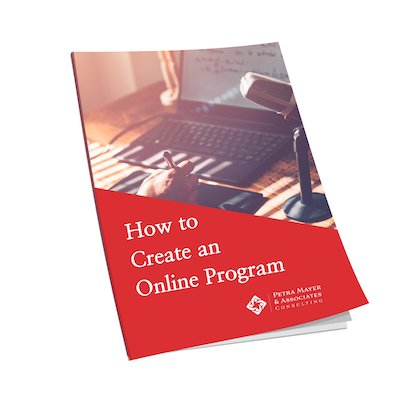If your organization is shifting from in-person training to online learning, you’re not alone. Many companies are making this change, often with the goal of saving time, reaching more people, and keeping learning consistent. One of the first questions we frequently hear is: Can we just convert our PowerPoint slides into SCORM files and upload them to our LMS? While it’s possible, this approach often falls short of delivering a meaningful learning experience.
In this article, we’ll explain what to consider before turning your slide deck into an online course, how to keep your learners engaged, and how to avoid one of the biggest problems in eLearning: click-through fatigue.
Why Converting PowerPoint Slides Isn’t Enough
Instructor-led training often includes a facilitator, group discussions, role-play, and personal stories that help learners connect the dots. PowerPoint slides in these sessions are just a visual aid, not the full lesson. When slides are converted directly into an online course without rethinking the learning experience, something important is lost: context, flow, and the human element that comes from live facilitation. A common misstep is hiring someone to turn the slides into a SCORM package by simply adding voiceover, transitions, and the occasional video. While the result may look polished, it often leads to a passive experience where learners click through slides with little interaction or engagement. This is where thoughtful instructional design makes all the difference.
Understanding SCORM
SCORM stands for “Shareable Content Object Reference Model.” It’s a technical format used to package online courses so they work in most LMSs.
SCORM tracks things like:
- Whether a learner has completed a module
- How much time they spent on it
- Their quiz scores or progress
This is useful because it helps organizations monitor training, especially when they need proof of completion for compliance reasons. But SCORM doesn’t magically make content engaging. It’s just the container. What matters most is what you put inside and how you build it.
How to Convert PowerPoint to SCORM
There are several tools that help you turn your slides into SCORM packages. Some of the most popular include:
- Articulate Storyline: Great for building custom interactions
- iSpring Suite: Good for PowerPoint-based conversion
- Adobe Captivate: Useful for responsive design and simulations
While tools like iSpring let you upload a PowerPoint and publish it as SCORM, we recommend going a step further. Instead of just converting, use this opportunity to rebuild the experience for online learners.
Start by asking:
- What are the main learning goals?
- What would help someone understand this without a facilitator?
- How can we make this more interactive?
That’s when your content begins to shift from “presenting information” to actually helping people learn.
Making SCORM Content Engaging
Click-through fatigue is a common challenge in eLearning. If a course feels like a basic slideshow with narration, learners are likely to disengage quickly. To maintain interest and encourage active participation, consider incorporating interactive elements such as:
- Hyperlinked Maps: Let users explore different parts of a topic by clicking on areas of a diagram or map.
- Click-and-Reveal Tables: Break up dense information by having users click to reveal details, one row or column at a time.
- Scenario-Based Questions: Put learners in a real-world situation and let them choose how to respond. This builds critical thinking and personal connection.
- Heatmaps: Show learners where to focus their attention – great for data, charts, or equipment visuals.
These features don’t just make your course more interesting. They help learners apply what they’re learning instead of just memorizing facts.
AI Tools That Can Help You Level Up Your SCORM Courses
AI is becoming a helpful tool in the course development process. Not as a replacement for good instructional design, but as a way to speed up certain tasks and add polish to your final product. When used thoughtfully, AI can help you create more engaging, accessible, and scalable content.
Here are a few ways AI can be applied in eLearning development:
Voiceovers
Tools like WellSaid Labs and Murf.ai allow you to generate high-quality narration without needing to hire voice actors. This is especially useful if your course content changes frequently, or if you want to test multiple versions of a script without re-recording. Many of these tools also offer a range of voices and languages to match your audience.
Animations and explainer videos
Creating videos used to require expensive production teams, but now platforms like Vyond and Synthesia let you produce professional-looking animated or AI-generated video content quickly. These videos can be used to demonstrate processes, introduce modules, or explain complex topics in a simple, visual way.
Quizzes, assessments, and feedback loops
Some authoring tools, such as Raptivity or Easygenerator, use AI to suggest quiz questions based on your content. Others can analyze learner responses and adjust feedback accordingly, helping learners stay engaged and reinforcing their understanding in real time.
Translation, captioning, and accessibility
AI tools are also making it faster and easier to create accessible content. From automatically generating captions to translating modules into multiple languages, AI can help ensure your course is inclusive and ready for a wider audience. Some platforms also help check your course for screen-reader compatibility or other accessibility guidelines.
While AI won’t design your learning strategy or define your goals, it can be a powerful assistant in building a better experience for your learners. Used strategically, it saves time, improves consistency, and supports more dynamic learning materials, especially when paired with a strong instructional design approach.
Final Thoughts
Begin with the learner in mind, not the slide deck. The answer to a successful SCORM course lies not in the original PowerPoint, but in understanding who your learners are and what they need to achieve.
Before you start, always remind yourself to ask:
- Who is taking this course?
- What do they already know?
- What do they need to do after completing it?
From there, design backwards. Focus on creating a clear path, building engagement through interaction, and giving people the chance to practise what they’ve learned. That’s how you go from just converting slides to building a real learning experience.
Our team is here to help organizations like yours move from traditional training to meaningful eLearning. Whether you’re just getting started with your LMS, or you need support building engaging SCORM courses, we’re here to guide you through every step. Get in touch today to talk about your training goals.
Explore our resource: How to Create an Online Program – perfect if you’re ready to move beyond individual courses and build a full online offering.


